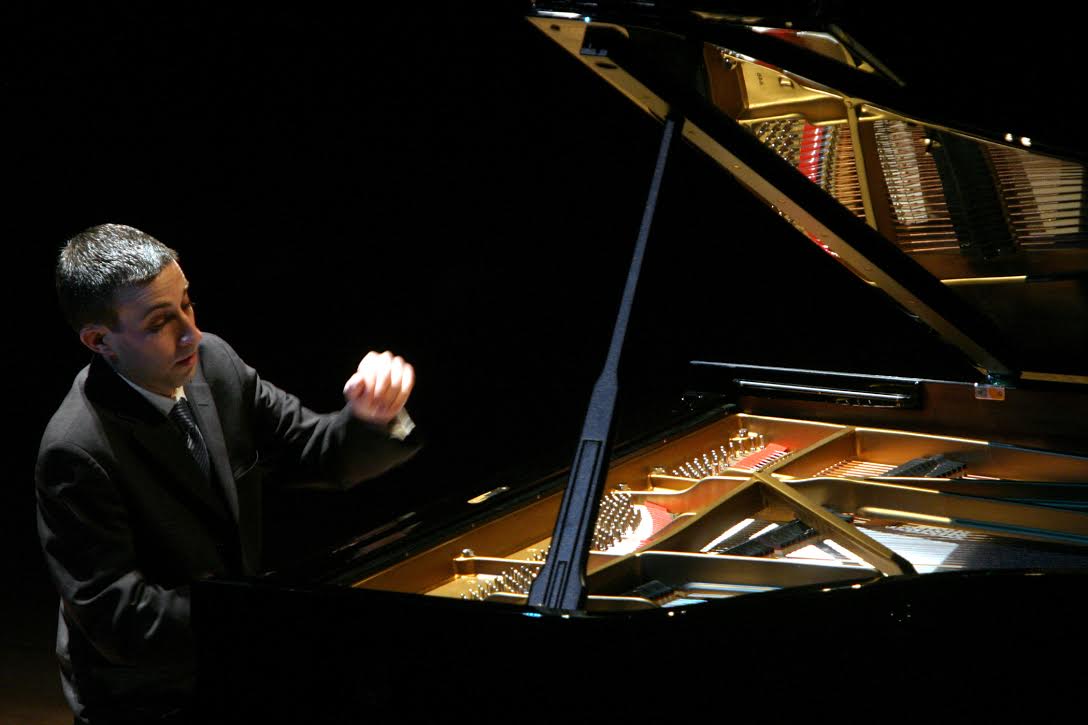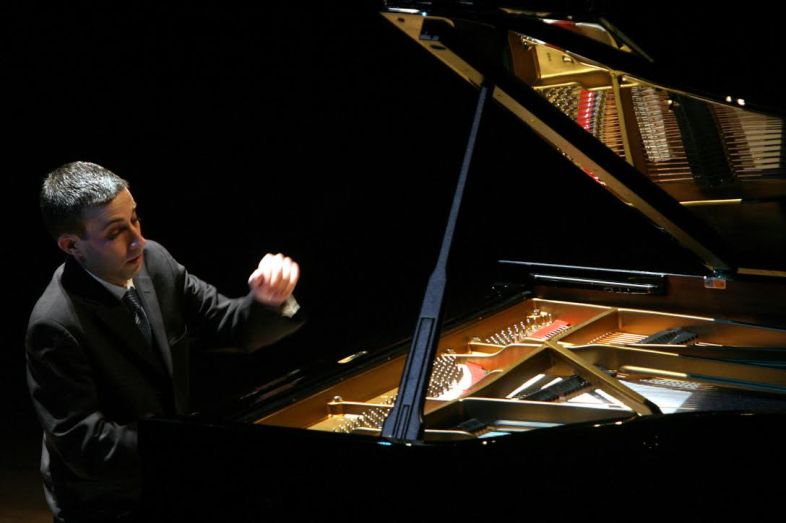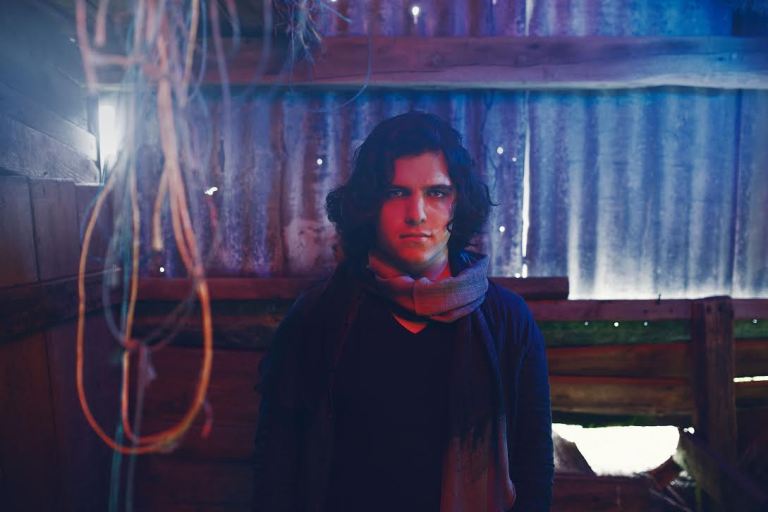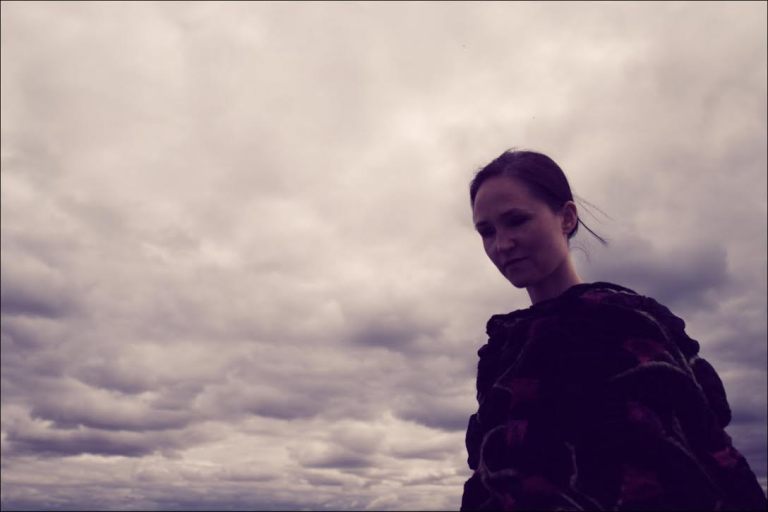Music For Writers: Benjamin Hochman, Translator — And ‘A Bit Of A Shaman, Too’
"Each composer has a distinct language," says pianist Benjamin Hochman in his Thought Catalog interview. No wonder his new album fits so well in our Music for Writers series: he's the son of literature professors.


[soundcloud url=”https://api.soundcloud.com/playlists/86639524″ params=”color=ff5500&auto_play=false&hide_related=false&show_comments=true&show_user=true&show_reposts=false” width=”100%” height=”450″ iframe=”true” /]
‘At The Piano…Even Dreams’
The very first notes of the album arrive like an abrupt, sonic question mark: “What can we do with this little perplexed phrase?”
The burly Scottish composer Oliver Knussen certainly knew what to do with his exquisitely moody 1989 Variations on just six notes.
And happily, it’s Israeli-born pianist Benjamin Hochman at the keyboard. You find few artists whose touch could be more sensitive and yet assertive in this clever opening of his new album Variations from Avie Records.
Thanks to New York Public Radio’s contemporary classical stream Q2 Music, you can hit the player above and listen to the full CD free of charge during its Album of the Week run.
Pianist Hochman has created his entire album around variations — one, the Brahms at the end, comes from the late classical era, while the others are from our time, our tensions, our tonalities. It’s a gratifying concept for a CD that leaves you admiring Hochman for the range of interpretive intelligence he brings to five very different composers’ creative voices.
And that’s where I began our interview.
‘The Brahms is the work I have lived with the longest’
Thought Catalog: Let me start by asking whether your own interpretive voice is naturally closer to one or another of the idioms represented here? The distance from Brahms to Berio, alone, is no short haul, and your capability in each of these stylistic constructs makes me wonder if there’s one composer with whom you might feel most comfortable?

Benjamin Hochman: In this album, I wanted to group together some beautiful piano works that happen to be in variation form. The innate versatility of the form has proven to be a natural draw for composers of all eras, and in the last century or so in particular, composers of greatly contrasting styles have used this form as a canvas for their distinctive musical ideas.
What I loved about preparing, performing and recording this project was both the cohesiveness of the concept and the freedom provided by each composer’s individual idiom.
My relationship with each composer and work on this recording has its own story and trajectory. Each encounter with the music creates impressions that eventually build an interpretation: practice sessions, performances, time spent thinking about the music at the piano and away from it, even dreams.
The Brahms is the work I have lived with the longest: I learned it as a teenager and performed it in my very first concert in America, as a student at the Curtis Institute of Music. I love Brahms’ music and have played quite a lot of it: his Händel Variations are a true masterpiece that I enjoy coming back to time and again.
With the three living composers represented here, my experience meeting them personally was very meaningful.
TC: You’ve met Knussen?
BH: I attended a rehearsal of Oliver Knussen conducting the Curtis Symphony and was immediately impressed by his incisive, clear and commanding approach to music. This led me to explore his oeuvre and eventually to his Piano Variations. The combination of tightly coiled energy, playfulness and colorful use of the piano is very appealing to me.
TC: And George Benjamin?
BH: When I was a student at the Marlboro Music Festival in 2001, George Benjamin was composer-in-residence: he conducted his own music and even improvised late one evening on the piano to provide music for a silent movie. His refined, sophisticated music speaks to me very much. Meditation on Haydn’s Name is beautiful, gentle and flowing, with an improvisatory flair.
TC: And Peter Lieberson.
BH: That same summer at Marlboro, I heard an unforgettable and revelatory performance given by the great singer Lorraine Hunt Lieberson and the wonderful pianist Peter Serkin. The program included Peter Lieberson’s Rilke Songs, which I absolutely loved. I got to know more of his music and liked it so much that after receiving the Avery Fisher Career Grant [in 2011], I asked him to write a piano concerto for me. Unfortunately, he was very ill, and did not live to write the piece. I did have the pleasure of spending an afternoon with him and his wife Rinchen in Tel Aviv, where he was receiving experimental treatment at a hospital: I really enjoyed spending this brief time with him.
I have played a few of his works, and when I learned that his Piano Variations — written in 1996 for the fantastic pianist Emanuel Ax and premiered at Lincoln Center — had never been recorded, I felt compelled to do it myself. Lieberson’s Variations are perhaps the most immediately accessible on first hearing of the contemporary works on this recording, without sacrificing depth and sophistication. The synthesis of disparate musical styles — jazz and popular music, folk materials, a crunchy and acerbic modernist harmonic language, a vivid imagination, and the Buddhist concepts embedded in this piece — make it richly satisfying.
TC: How about Luciano Berio?
BH: I never met Berio [who died in 2003] but have always loved his music, which is both brilliant and deeply human. His Cinque Variazioni is an early work and the oldest of the contemporary pieces on this recording. It was composed in 1953 and revised in 1966. It’s so atmospheric and full of character: alternately funny, furious and visionary.
‘The Lieberson can be quite gnarly’
TC: Is there one of these composers whose work is especially challenging among the group?
BH: I think they all are very challenging! The Brahms is a challenge because it’s by far the largest of these pieces, a massive edifice where each brick in the structure is crucial. The Berio and Knussen are extremely challenging both technically and conceptually- it really took me a long time to master the difficulty of physically playing them as well as fully understanding them to the point that I could be free to express myself and communicate that to an audience.
The Lieberson can be quite gnarly at times and has a particular approach to the instrument that was not immediately natural to me. The Benjamin was challenging because despite the impression of ease that the listener receives, the score is notated meticulously and each note must not be moved one millimeter in either direction — a sort of sleight of hand is needed to make it work.
‘I Try To Immerse Myself In Each Language’
 TM: Would it be too far afield of me to suggest that hearing you handle these different composers so deftly is like hearing a good translator at work? Is there a kind of “language” to each of them, in terms of how you approach working with such different pieces?
TM: Would it be too far afield of me to suggest that hearing you handle these different composers so deftly is like hearing a good translator at work? Is there a kind of “language” to each of them, in terms of how you approach working with such different pieces?
BH: I like this idea very much. Since I am a performer rather than a composer, I feel that my role is indeed akin to a translator, though sometimes a bit of a shaman too: my goal is to bring the piece back to life, using the information in the score as a blueprint. I agree that each composer has a distinct language — even if a group of composers within a particular time period share a common group of languages — and sometimes certain pieces within a composer’s oeuvre speak a particular dialect within that language.
I try to immerse myself in each language until I understand its syntax, sound and spirit. My hope is to make it clear, comprehensible and meaningful to my listeners.
TC: I’m listening to the sprightly sounds in the latter part of the Lieberson variations, and then the meditative tone — as the title has it! — of the Benjamin work on Haydn’s name. You know, the comparison raises an interesting question relative to our “Music for Writers” series. In text, our authors are often surprised to find that “quieter,” more cerebral or less active scenes and plot points can be more draining to handle than energetic, busy passages. Is there any corollary in your experience of this kind of music? — can the restraint and concentration required by some of the “Haydn” be as or more taxing, in performance than, say, the walking bass of the latter part of the Knussen with the upper hand all over the place?
BH: I think so, especially in terms of mental concentration rather than physical exertion. I find that every sound has a distinct color and character. People sometimes think that loud and frenetic passages are much more intense than soft spacious ones, and this can true. But the opposite can also be true: some of the most frightening, shattering moments in music are given sotto voce.
Of the pieces on this recording, I found these kinds of passages in the Berio especially: both the opening and the closing sections are deeply mysterious, intense and expressive, akin to Beethoven’s late style where every note speaks volumes. It takes tremendous concentration and control to succeed in these passages.
TC: In terms of your discernment of the subtleties of each of these composers’ variations, is this a way of hearing music that has been with you from boyhood? Were you always so comfortable with this type of diversity? It’s not every musician’s forte, as we know. Or is this range of response something you’ve developed later in life as your work matured?
BH: I think I was always interested in music that spoke to me directly and deeply, regardless of a particular style or period. I do feel that my approach to programming, both in concert and on recordings, has evolved and become more specific, though without any particular dogma or agenda. I like to juxtapose pieces that speak to each other, compliment or contrast each other. I think that this is one way to keep music alive and well, nether rejecting music of earlier times because of the weight of tradition and performance practice, nor rejecting the new out of fear or lack of familiarity.
Most importantly, my hope is always to give my listeners thought-provoking, moving experiences.
‘Bob Dylan or Pete Seeger’
TC: Lastly, I’d love to know if you come from a musical family? Was there music in your home in Jerusalem? Or did you catch everyone by surprise with this talent and affinity for the art?
BH: I come from a family of music lovers, though not at all professional musicians or even in the direction of classical music. If there was music playing in the house it was likely to be Bob Dylan or Pete Seeger.
My parents are literature professors. My father’s research interests include D. H. Lawrence, Charles Dickens, and S. Y. Agnon. My mother’s research includes book history and nineteenth-century American literature and culture. And my brother is a mathematician: his research is in dynamical system theory and connections with fractal geometry, information theory and computation theory.
So my interest in music came about really by chance, through a music teacher who discovered my affinity for music early on. My family has always been very supportive, each of them discovering and rediscovering music in new ways through the years — it’s been fun to watch that. Their perspectives and opinions are often very refreshing!
TC: And what’s coming up for you next?
BH: Many exciting projects coming up: Rzewski’s People United Will Never Be Defeated!; an “Homage to Chopin” recital program including new works by Kaija Saariaho, Tamar Muskal and Thomas Ades; concertos by Mozart, Bernstein, Ravel and De Falla; myriad chamber music collaborations; and plans for some significant cycles of solo piano works focusing on major composers.
TC: So busy! And literary parents. I should have known. It’s great of you to take the time to talk to us. This is such “writerly” music, full of color and nuance that can help stimulate the vocabulary of any good author at work, so it’s doubly nice to be able to offer it to our readers. Congratulations again on a very compelling collection here.
BH: Thank you so much. This has been really fun and your questions have been fascinating and thought provoking. I feel that you really took the time to think about my project and you understood so much about it — that means a lot to me.
The Ecstatic Music Festival
If you’re in the New York area, you’ll find all the savviest writers — and the best-looking, of course — at performances in the contemporary-classical Ecstatic Music Festival, helmed by composer Judd Greenstein at the Kaufman Music Center‘s Merkin Concert Hall near Juilliard.
And if you haven’t been able to get to this season’s performances, Q2 Music has the audio for you, free and on-demand for your writing sessions. I recommend you start with the Spektral Quartet performance with vocalist Julia Holter. Check out the premiere of composer Alex Temple’s Behind the Wallpaper at 45 minutes into the program. ![]()




